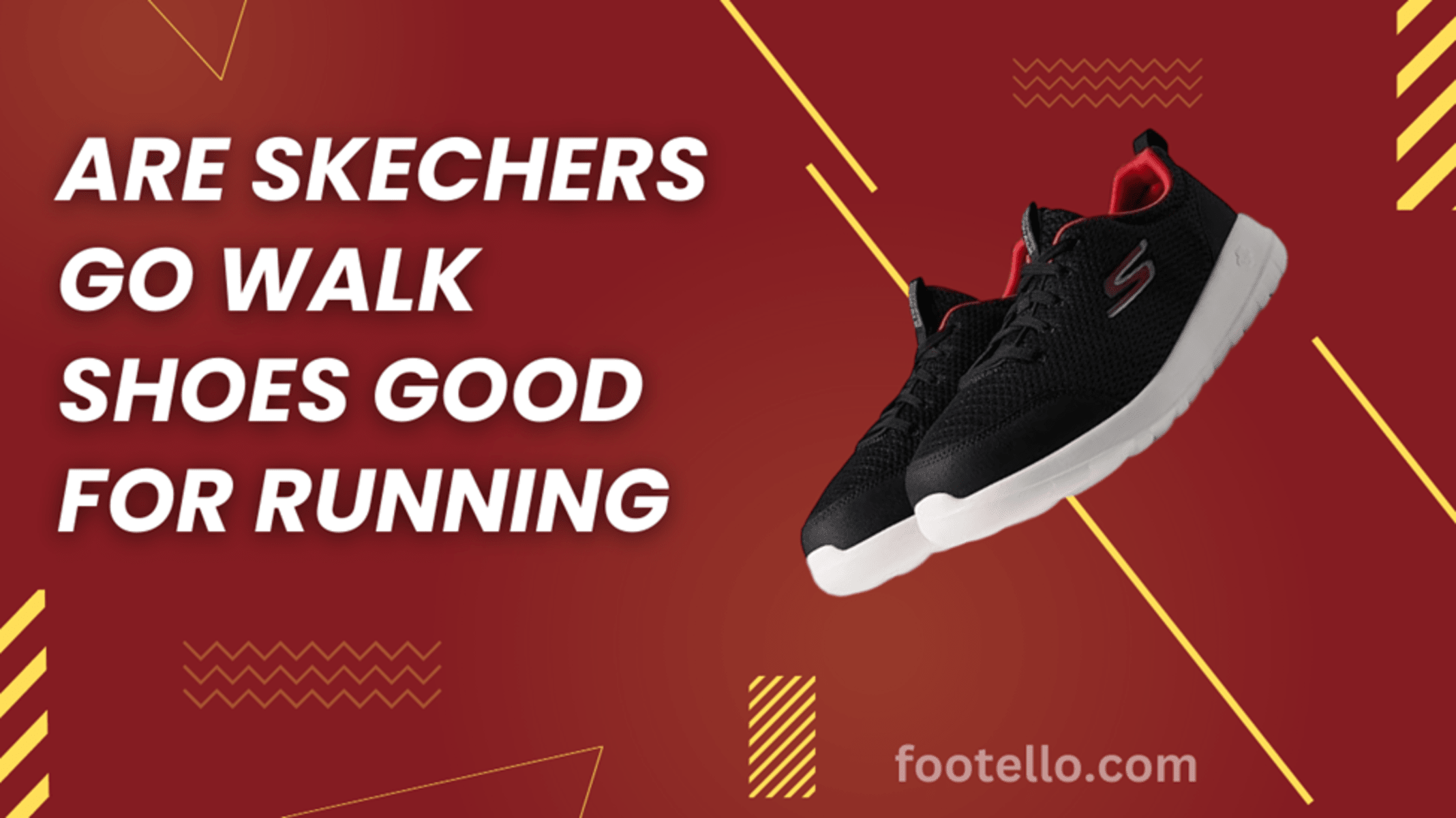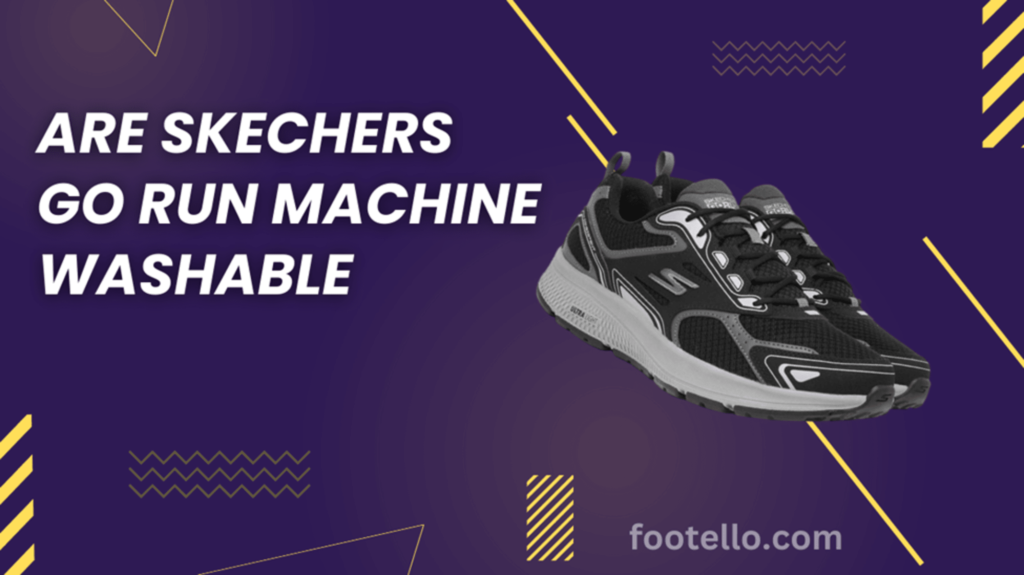Running is one of the most popular and highly beneficial exercises for improving cardiovascular health, building endurance and strength, maintaining a healthy weight, and boosting overall well-being.
Having the proper running shoe is crucial to allow runners to log miles comfortably and safely, without excessive impact or risk of injury.

We will analyze how Skechers Go Walk running shoes stack up across the key performance criteria for safe and comfortable runners.
We’ll compare their fit, feel, and functionality to traditional running shoes for training, racing, and logging daily miles across varied distances and surfaces.
Let’s take a look at the factors that make an effective running shoe.
Post Contents
Are Skechers Go Walk Shoes Good for Running?
While Skechers Go Walk shoes provide cushioning and comfort for walking, they are not really designed for running. Most reviews suggest the Go Walk line lacks the support, responsiveness, and durability required for high-impact activities like running. They are better suited for casual walking.
You May Also Like:
Are Skechers Go Walk Good for Standing All Day
Key Factors to Evaluate in Running Shoes
When considering the best running shoe for your individual needs and gait, there are several vital factors to analyze for both performance and injury prevention:
Shock Absorption and Cushioning
The repetitive impact of running significantly increases the force on the feet compared to walking. Proper cushioning through midsole foam helps absorb shock and reduce pronation before energy travels up the kinetic chain to the ankles, knees, and hips over each gait cycle. High energizing cushioning also keeps legs feeling fresher for longer distances.
Stability and Motion Control
Runners shift weight side to side and heel to toe when feet strike and push off during each gait cycle. Good stability through medial support, torsion plates, and padded heels prevents excess inward/outward rolling which can lead to ankle injuries and plantar fasciitis.
Flexibility and Responsiveness
Feet naturally flex as they adapt to terrain during runs. Shoes must flex adequately to align with the foot’s movement rather than resisting it, while toe spring designs propel feet into the next step with energy return. Minimal, flexible athletic shoes have grown popular but may lack support.
Breathability and Ventilation
Running creates significantly more heat and sweat than walking, making proper airflow important to keep feet cool and head dry. Mesh fabric uppers and ventilation ports allow perspiration to escape so runners stay comfortable mile after mile.
Lightweight Construction
Extra weight causes fatigue over long distances and makes for a heavier stride to lift off the ground with each step. New materials like mesh and fresh foam make modern running shoes lighter than ever without compromising cushioning or support.
Traction and Grip
Variable outdoor terrain from asphalt to grass and trails requires durable outsole rubber with gripping lugs to prevent slippage, particularly important at faster paces. The outer sole must provide adaptable traction in wet, dry, and uneven conditions.

You May Also Like:
Are Skechers Go Walk Shoes Good for Walking
Evaluating Skechers Go Walk Shoes as Running Shoes
Now that we understand the key factors making effective running shoes, let’s analyze how Skechers Go Walk models perform for runners against expectations around cushioning, stability, flexibility, and more.
We’ll identify any shortcomings as a running shoe versus traditional athletic trainers designed for logging miles on roads, sidewalks, and trails.
Cushioning and Impact Absorption
Skechers Go, Walk models, provide highly responsive cushioning well suited for walking thanks to the Ultra Go midsole cushioning and Goga Mat comfort insole. However, the compression is a bit too soft and unstable under the fast repetitive foot strikes of running.
Reviews indicate heel cushioning bottoms out quickly creating foot and shin pain over long distances due to inadequate shock absorption.
Stability, Support, and Pronation Control
In maximizing underfoot flexibility to let feet move naturally, Skechers Go Walk shoes lack measures for stability like firmer midsoles, external heel counters, medial posts, torsion plates, or motion control guidance for safe foot alignment.
Consequently, the ultra-flexible sole allows excessive inward pronation and ankle rolling. These risks increase injury likelihood for runners needing support, especially overpronators.
Flexibility and Responsiveness
The ultra-flexible Goga Mat insole and woven mesh upper offer exceptional toe spring flexibility to align with natural foot movement when running. This allows a smooth transition from heel strike to toe-off propelling you into the next step.
However, unstructured knit upper materials may prove too unsupportive for certain runners.
Breathability and Ventilation
As a lightweight lifestyle shoe, Skechers Go Walk shoes excel here with highly breathable uppers to release heat and moisture during sweaty runs. The soft woven knit mesh material and goga net openings allow air circulation around the top and sides of your foot as temperatures rise.
Weight
Living up to their model name, Skechers Go Walk rate as exceptionally lightweight at 6-7oz for women and 7-8oz for men per shoe. This featherweight construction avoids any heavy stability components that could slow down a runner’s stride.
The lightweight profile makes these shoes ideal for racing or training at fast paces around a track or on race day.
Traction and Wet/Dry Grip
The flexible grooved soles work well enough on dry concrete and asphalt but lack a true grippy outsole and aggressive lugs for muddy grass and unpredictable trail runs.
Traction could easily prove insufficient when running on slick rain-soaked pavements as well. Their thin sole also offers little protection from road debris and hazards.
You May Also Like:
Are Skechers Go Walk Good for Flat Feet
Comparing Skechers Go Walk to Traditional Running Shoes
Now that we have broken down Skechers Go Walk’s performance in key areas, how do they stack up against traditional lightweight trainers from leading athletic shoe companies specifically designed with runners’ needs around cushioning, pronation, and flexibility front of mind?
Outlining the comparative strengths and weaknesses:
| Feature | Skechers Go Walk | Traditional Running Shoes |
| Cushioning | Too soft, bottoms out from the impact | Firm yet flexible energetic cushioning |
| Stability | Lacking support structures leads to excess pronation | Control pronation and ankle rolling with posts |
| Flexibility | Excellent mimic natural foot movement | Avoid over-flexibility and still support |
| Breathability | Very good knit mesh upper | Use advanced woven fabrics |
| Weight | Exceptionally light | Lightweight but has some added support |
| Traction | Poor wet/dry traction and debris protection | The durable grippy outsole protects feet |
As the table illustrates, Skechers Go Walk excels at offering extremely low weight flexibility while allowing breathability for athletes’ feet during runs.
However, they compromise on stability, pronation correction, shock absorption, and wet weather traction versus traditional running shoes from companies like Asics, Saucony, and Nike.
These athletic brands conduct extensive athlete gait analysis and materials innovation to provide responsive energetic cushioning in lightweight builds – cushioning that protects joints without breaking down prematurely or sacrificing weight.
Crucially for injury prevention, they add support through guidance rails and torsion plates suited to overpronator and neutral runner needs.
Let’s go through some model-by-model comparisons:
- Asics Gel Nimbus: Award-winning Gel Nimbus models are celebrated for their plush gel cushioning absorbing hard impacts while remaining lively underfoot. Stability guidance keeps excess movement in check even as wrinkled soles flex naturally. Nimbus continues traditions of superb comfort and support even as new editions shed weight.
- Saucony Kinvara: Firm but flexible cushioning gives the Kinvara a responsive fast feel that encourages quick turnover helped by a breathable seamless upper and pencil-thin outsole that smooths transitions while shaving weight. Versatile for long miles or racing 5Ks.
- Nike Zoom Pegasus: Workhorse Pegasus runners have become lighter and more responsive over recent versions by using React foam and translucent uppers while retaining the smooth stable personality that makes them suitable for daily training miles. Generous forefoot cushioning never feels dull or flat underfoot.

You May Also Like:
Are Skechers Go Walk Good for Wide Feet
Conclusion
Skechers Go Walk shoes excel at extremely low weight flexibility in highly breathable mesh uppers while allowing natural foot movement when running short distances. However, the complete lack of pronation control and stability structures plus inadequate cushioning density from their lifestyle shoe origins leave them less than ideal for regular high mileage training or long distances compared to athletic brands purpose-built for reliable mile after mile performance.
If choosing Skechers shoes for running, consider their GOrun line instead which adds performance technologies better suited to managing impact across midfoot and forefoot strikers’ gaits.
Or explore top-rated trainers from leaders like Asics, Brooks, Saucony, and Nike. Their innovative guidance systems guide feet through smooth transitions. Energetic midsole foams keep turnover lively mile after mile while supporting feet, joints, and muscles during repetitive impacts for healthier, more enjoyable runs. Train and race your best by choosing running shoes designed for comfort, biomechanical efficiency, and injury prevention from lace-up to the last step across any distance.
Frequently Asked Questions
Are Skechers Go Walk shoes good for running on treadmills?
On treadmills, the flat soft surface does help improve cushioning for Skechers Go Walk shoes compared to pavement. However, the total lack of pronation control and mediolateral support still puts you at risk of missteps and injury in the long run. The treadmill belt motion makes it easier to roll an ankle if the shoes don’t have adequate stabilizers.
Can you run marathons in Skechers Go Walk shoes?
It’s not recommended to run full marathons of 26.2 miles in Skechers Go Walk shoes. Their complete lack of support coupled with flexible unstable cushioning leaves feet quite vulnerable to joint pain, plantar fasciitis, or rolled ankle injury when running hundreds or thousands of repetitive steps.
Standard marathons mean at least four straight hours of pounding pavement, requiring proper shock attenuation and gait control to maintain form.
Soft lifestyle shoes like Skechers Go Walk fail to correct overpronation, creating internal rotation stress on knees and hips with compounding pain over long distances. They also lack forefoot protection or energy return to keep springs in your step so late race fatigue sets in quicker.
How do Skechers GORun athletic shoes compare for running vs Go Walk models?
If you like Skechers footwear technology but need real performance functionality, the Skechers GOrun line adds all the imperative running support and responsiveness entirely missing from casual Go Walk lifestyle shoes.
Share Your Love

